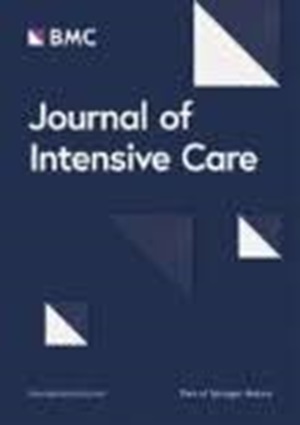Recent advances in cardiorespiratory monitoring in acute respiratory distress syndrome patients
IF 4.7
2区 医学
Q1 CRITICAL CARE MEDICINE
引用次数: 0
Abstract
Recent advances on cardiorespiratory monitoring applied in ARDS patients undergoing invasive mechanical ventilation and noninvasive ventilatory support are available in the literature and may have potential prognostic implication in ARDS treatment. The measurement of oxygen saturation by pulse oximetry is a valid, low-cost, noninvasive alternative for assessing arterial oxygenation. Caution must be taken in patients with darker skin pigmentation, who may experience a greater incidence of occult hypoxemia. Dead space surrogates, which are easy to calculate, have important prognostic implications. The mechanical power, which can be automatically computed by intensive care ventilators, is an important parameter correlated with ventilator-induced lung injury and outcome. In patients undergoing noninvasive ventilatory support, the use of esophageal pressure can measure inspiratory effort, avoiding possible delays in endotracheal intubation. Fluid responsiveness can also be evaluated using dynamic indices in patients ventilated at low tidal volumes (< 8 mL/kg). In patients ventilated at high levels of positive end expiratory pressure (PEEP), the PEEP test represents a valid alternative to passive leg raising. There is growing evidence on alternative parameters for evaluating fluid responsiveness, such as central venous oxygen saturation variations, inferior vena cava diameter variations and capillary refill time. Careful cardiorespiratory monitoring in patients affected by ARDS is crucial to improve prognosis and to tailor treatment via mechanical ventilatory support.急性呼吸窘迫综合征患者心肺监测的最新进展
文献报道了对接受有创机械通气和无创通气支持的 ARDS 患者进行心肺监测的最新进展,这些进展可能对 ARDS 的治疗具有潜在的预后意义。用脉搏血氧仪测量血氧饱和度是评估动脉氧饱和度的一种有效、低成本、无创的替代方法。对于皮肤色素较深的患者必须谨慎,因为他们可能会出现更多的隐性低氧血症。死腔替代物易于计算,对预后有重要影响。重症监护呼吸机可自动计算机械功率,这是一个与呼吸机诱发的肺损伤和预后相关的重要参数。在接受无创通气支持的患者中,使用食管压力可以测量吸气力度,避免气管插管可能出现的延误。在低潮气量(< 8 mL/kg)通气的患者中,也可使用动态指数评估液体反应性。对于呼气末正压(PEEP)水平较高的通气患者,PEEP 测试是被动抬腿的有效替代方法。越来越多的证据表明,有其他参数可用于评估输液反应性,如中心静脉血氧饱和度变化、下腔静脉直径变化和毛细血管再充盈时间。对 ARDS 患者进行仔细的心肺监测对于改善预后和通过机械通气支持进行针对性治疗至关重要。
本文章由计算机程序翻译,如有差异,请以英文原文为准。
求助全文
约1分钟内获得全文
求助全文
来源期刊

Journal of Intensive Care
Medicine-Critical Care and Intensive Care Medicine
CiteScore
11.90
自引率
1.40%
发文量
51
审稿时长
15 weeks
期刊介绍:
"Journal of Intensive Care" is an open access journal dedicated to the comprehensive coverage of intensive care medicine, providing a platform for the latest research and clinical insights in this critical field. The journal covers a wide range of topics, including intensive and critical care, trauma and surgical intensive care, pediatric intensive care, acute and emergency medicine, perioperative medicine, resuscitation, infection control, and organ dysfunction.
Recognizing the importance of cultural diversity in healthcare practices, "Journal of Intensive Care" also encourages submissions that explore and discuss the cultural aspects of intensive care, aiming to promote a more inclusive and culturally sensitive approach to patient care. By fostering a global exchange of knowledge and expertise, the journal contributes to the continuous improvement of intensive care practices worldwide.
 求助内容:
求助内容: 应助结果提醒方式:
应助结果提醒方式:


